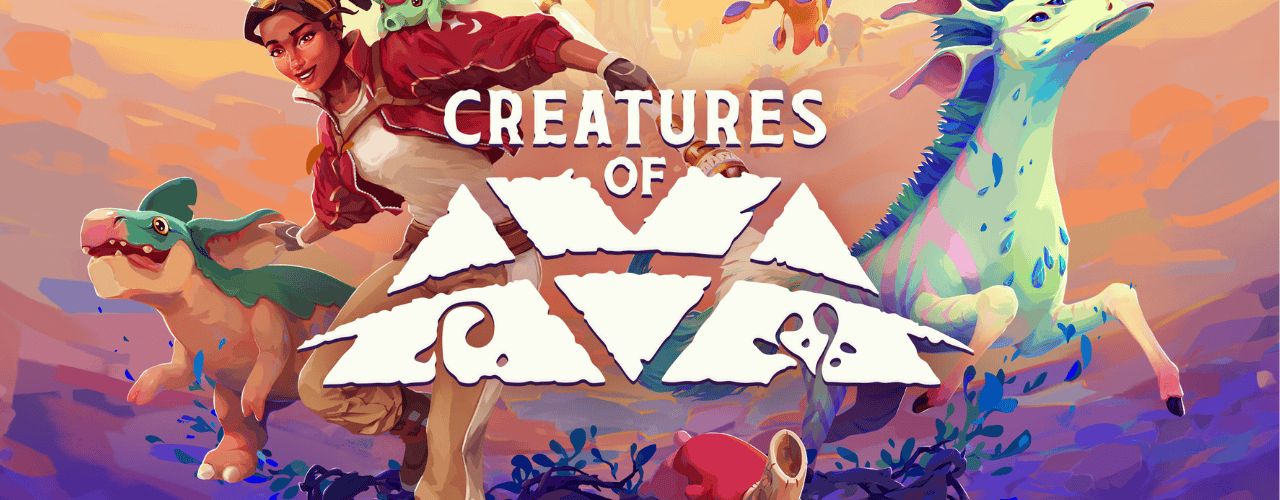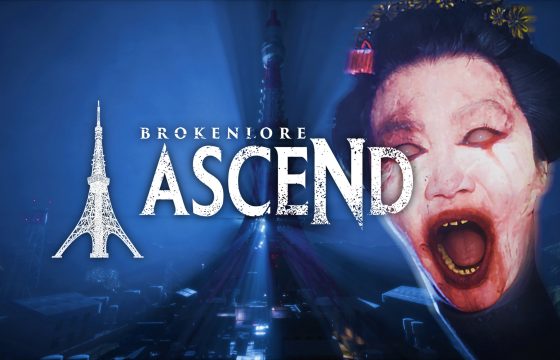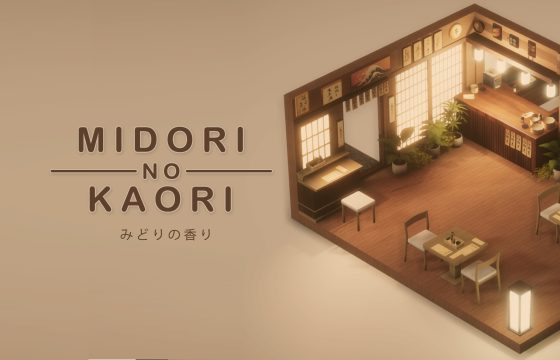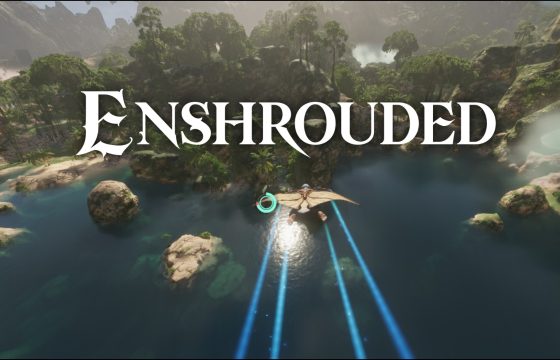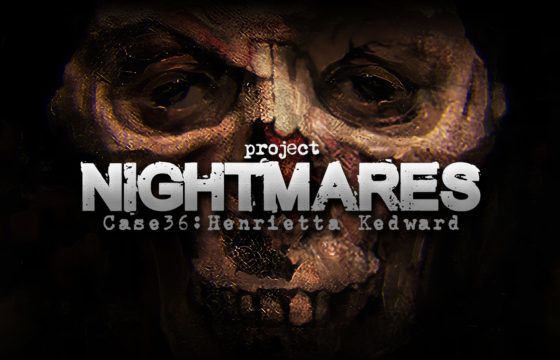Sometimes, a simple act of love is all it takes to save an ecosystem on the brink of collapse.

“Music is the language of the spirit. It opens the secret of life bringing peace, abolishing strife.” With this immortal quote from the great and eclectic poet and painter Kahlil Gibran, we set the stage for our review of Creatures of Ava, the second official project from Inverge Studios. Although not flawless in its execution or final outcome, the game delivers a charming, endearing, and at times unexpected experience, with a powerful and deeply resonant message that strikes a chord with the soul.
Available from August 7 on PC via Steam, Xbox Series X/S, and included on day one with Game Pass, Creatures of Ava is a relaxing yet ambitious open-world adventure—or as the developers describe it, “an exciting action-adventure, creature-saver game.” It immerses us in the vibrant, mysterious alien world of Ava, where we assume the role of Vic, a young researcher on a mission to save the local fauna from a devastating and rapidly spreading infection.
Ready to learn more and see if the latest creation from Inverge Studios and 11 bit studios has captured our hearts? Then board your starship and join us as we explore the awe-inspiring, pristine world of Ava.
Discover the minds behind Creatures of Ava: A closer look at the creators, Inverge Studios
Before we touch down on Ava and explore its lush ecosystem, let us introduce you to the creative minds behind the project: Inverge Studios, a dynamic Spanish team based in La Marina de València.
Made up of a close-knit team of 13, along with their vigilant security expert, Leo the dog, Inverge began its journey during their college years. However, it was in 2016 that the team formally established itself as a video game studio, diving into the mobile gaming industry. By the end of 2017, in just one year of activity, the team had already released four titles for iOS and Android: Cube Beat, Mad Line, Hyper Switch, and Become a Legend: Dungeon Quest.


However, despite the positive results and favorable reception of their mobile projects, the team’s ambitions called for more. At the start of 2018, they decided to aim higher and embrace a new challenge: developing Effie, their first console game, in partnership with PlayStation Spain and Lanzadera. The studio recalls that this journey was anything but easy—not only due to the increased complexity of the game itself but also because the switch from Unity to Unreal Engine inevitably raised players’ expectations.
Undeterred by the growing challenges, the team approached the development process with determination, passion, and maturity. After a year and a half of dedicated work, Effie was released for PlayStation 4 in 2019, receiving a warm reception from players. This success paved the way for the game’s subsequent release on Steam, Xbox One, and Nintendo Switch.
In July 2019, just a month after Effie launched on PlayStation, the development of Creatures of Ava officially began in collaboration with Chibig. The project gained momentum in March 2020 with the involvement of 11 bit studios, a Polish video game developer and publisher based in Warsaw. Founded in 2010 by former members of CD Projekt and Metropolis Software, 11 bit studios brought significant expertise and resources to the project. With a strong lineup of games published this year, including the acclaimed Indika, the highly anticipated Frostpunk 2, and of course, Creatures of Ava, their contribution was instrumental in shaping the game’s final vision.
Now that you’ve gained insight into the creators behind Creatures of Ava, it’s time to turn our attention to their latest work and explore it in greater detail.
An immersive, meaning-rich narrative delivered through punchy and impactful communication
Let’s cut to the chase. Despite our initial reservations about familiar tropes—the predictable world to save, the heroic protagonist stepping in like a world-saving paladin, and other clichés that could lead to a formulaic narrative—Creatures of Ava quickly dispels these fears. Its storytelling emerges as a standout feature, marked by exceptional maturity, insight, and unexpected depth, thanks to the talented team and the expert contributions of co-writer Rhianna Pratchett.
From the very beginning, the story doesn’t shy away from showing the harsh realities of life—its cruelty, bitterness, and emotional indifference. The brief cutscene that opens the adventure allows us to piece together fragments of the protagonist Vic’s past and her faded memories: a dramatic tale of how, from a young age, she was wrenched from the loving embrace and unconditional affection of her family and community. Cast into space in an emergency vessel with hopes of a better future, she leaves behind a shattered civilization, now in ruins and embraced by death. Then comes the explosion, the darkness, the void. But there’s no time to dwell on the past, no room for self-pity, and no time to waste. What matters now is the present.

The cutscene that follows this poignant flashback shows Vic in orbit, preparing to land on a mysterious planet that had been previously explored and studied by her research organization but was abandoned due to unexplained circumstances. Everything seemed to be going smoothly as her vessel neared its landing on Ava—until a mysterious malfunction thrusts Vic into grave danger, forcing her to make an emergency landing on the planet. Despite the catastrophic impact that severely damages her craft, Vic emerges relatively unscathed, with only a sore shoulder and general leg discomfort.
Yet another, perhaps more critical issue arises. During the vessel’s descent and crash landing, Vic loses all communication with her organization and her key contact, Tabitha. This leaves her to navigate the challenges of Ava alone, at least until contact can be reestablished. Thus begins Vic’s monumental journey on Ava—a quest that will lead her to explore the planet’s most remote corners, uncover the origins of the infection ravaging its rich ecosystem (known in the game as the “withering”), and strive to save the world from imminent destruction.
The mission proves far more challenging than anticipated. Vic must navigate not only the challenges posed by the deteriorating flora and fauna afflicted by the infection but also the complex task of forging a peaceful relationship with Ava’s indigenous inhabitants. From the very beginning, it is evident that these natives are far from welcoming; they appear wary, surly, and aloof, to say the least.
As for the plot, we’ll refrain from revealing specifics to avoid spoiling any of the story’s twists. Before we explore other facets of the game, let’s take a moment for a brief reflection.

If you’ve been paying close attention to our earlier remarks in this section, you’ll have picked up on our initial reservations about the narrative. We were concerned that the story might lean towards predictability or cliché, despite its evident depth. However, we are pleased to acknowledge that our apprehensions were misplaced. Inverge Studios deserves high praise for their exceptional, mature, and insightful handling of complex themes such as extinction, human intervention in alien ecosystems, and the far-reaching consequences of past actions on the environment. Their work reflects meticulous attention to detail, thorough research, complemented by dialogue that is not only emotionally resonant but also subtly imbued with irony, enriching the overall experience.
We strongly recommend immersing yourself in this story, not only for its unexpected and bold evolution—thanks to the outstanding narrative design by Inverge and Rhianna Pratchett—but also for its ending, which delivers a truly original and completely unforeseen twist. Seeing is believing!
A planet to explore, experience, feel, and touch with your own hands
Creatures of Ava can be completed in roughly 10 hours, or around 15 if you aim for full completion. This duration strikes a perfect balance—not too long and not too short—fitting seamlessly with the developers’ gameplay design and the engaging narrative we’ve previously praised. Extending the game further could have risked undermining the well-crafted experience.
The game unfolds across four stunningly distinct biomes, presenting a meticulously crafted world designed to fully immerse players. Central to this experience are exploration, environmental puzzles, and the Avapedia—a smart, engaging digital database crucial for unraveling the game’s rich lore. Players will need to consult this tool to learn about the diverse locations, species, and flora they encounter, as well as to delve into the planet’s deep and intricate history.
Our overall experience with Ava was generally positive, thanks in large part to the excellent level design that shapes the various regions of the world. The game’s world-building is outstanding, skillfully blending the pristine natural expanses with the finely crafted architecture of its villages. This harmonious combination delivered a visually stunning experience. We frequently found ourselves slowing Vic’s pace just to marvel at the landscape, listen to the jungle’s animal calls, or observe the local fauna, all while trying to capture the perfect moment for a photograph.

In Creatures of Ava, photography is not just a means to enrich your Avapedia with detailed information about various creatures; it’s also a captivating pastime. Just be careful not to snap a photo while an Ura is charging at you—such moments can be, to put it mildly, quite painful.
The game pays meticulous attention to both the flora and fauna of Ava, with special emphasis on its alien wildlife. The design and animation of these creatures are breathtaking, offering a notable variety and distinctiveness. However, this level of detail isn’t consistently applied to Vic, whose movements often appear stiff and somewhat unrealistic.
However, Ava’s world isn’t without its imperfections. While our personal experience was largely positive, bolstered by Inverge’s thoughtful approach to filling the game world and avoiding the emptiness common in many open-world games, there are some areas for improvement. The side quests, for example, lack variety and depth, often involving repetitive journeys between points A and B. Although exploring Ava’s breathtaking landscapes was a joy, and the efficient teleportation system helped mitigate some of the monotony, we wished for side quests that could match the main storyline’s quality and originality. This repetition, while not overwhelming, somewhat detracted from the otherwise immersive experience and the pleasure of uncovering what lies behind every corner in this exquisitely crafted world.
Did the choice of a purely non-violent gameplay pay off?
On paper, the developers’ decision to design a deliberately non-violent gameplay experience caught our attention and won us over. This approach not only perfectly aligns with the game’s overall concept and message but also intrigued us on a personal level, as we were eager to challenge ourselves with a combat system that takes a radically different approach. But as the title of this section suggests, was this choice successful? The answer is both yes and no.
Let’s take it step by step. As we mentioned earlier, Creatures of Ava revolves around exploration and puzzle-solving. However, in our opinion, the game’s real strengths lie in two key tools that shape the entire experience: the Nafitar staff and the Flute.
The magical Nafitar staff is the first crucial tool players will encounter. This staff has the extraordinary power not only to clear the infectious growths blocking Vic’s path—without which progress would be impossible—but also serves as the primary means for the protagonist to combat the withering and heal infected animals, by firing a powerful healing beam that purifies creatures and restores balance to the environment.


As you might have gathered, the decision to center much of the gameplay around the Nafitar staff is both clever and effective. Not only does it enable players to unlock new areas by purifying regions blocked by infected vegetation, but it also allows for backtracking and revisiting previously inaccessible zones.
The staff also serves as a non-violent combat tool, aligning perfectly with Inverge’s game philosophy. It not only cleanses vegetation but also tames and heals creatures afflicted by the withering. In these engaging action sequences, players must dodge attacks from unruly creatures while recharging the healing beam—a feature that creates a satisfying chain reaction when dealing with multiple targets—until the withering gauge is depleted and the creature is restored. The concept of non-violent combat is both charming and intuitive. However, over time, this mechanic can become repetitive, particularly because Vic’s healing activities can feel static, despite being enhanced through a dedicated skill tree.
Equally intriguing, though not as dynamic as anticipated, is the use of the Flute. This magical pipe serves not only as a traditional musical instrument but also becomes crucial for healing Ava and connecting with the local wildlife. Even animals not corrupted by the withering can be wary of human presence and often flee when approached. This is where the Flute’s magic proves invaluable. To gain the trust of these creatures, players must play specific melodies unique to each species. Playing the correct tune will encourage the animals to approach, interact, and even follow you. Precision is key: if the melody is incorrect, the animal will not recognize it and will continue to keep its distance, requiring you to retry until you play the exact melody. The game provides a visual cue near the animal’s face to indicate whether it has successfully recognized the melody from your Flute.

Once you’ve successfully played the correct melody, the Flute will automatically begin playing the tune, allowing you to guide the animals as desired. But the Flute’s powers extend beyond this. Through its deep resonance with Ava’s musical rhythms, the Flute enables players to forge a mental link with creatures, allowing them to control their bodies and harness their unique abilities. This power is crucial for environmental interactions and for unlocking previously inaccessible areas.
Two tools that had the potential to enhance and distinguish the gameplay in Creatures of Ava—if managed with greater care and attention—could have made our time in Ava even more unforgettable.
Final Thoughts and Verdict
Before we reach our final conclusions, it’s important to highlight a few aspects that deserve special mention. Foremost among these are the animations, which stand out for their remarkable quality and clearly reflect the developers’ deep affection for the project. The meticulous attention given to the creatures’ behaviors and expressions—whether we’re interacting with them, petting them, or simply approaching to take a photo—demonstrates the dedication poured into their design.
The voice acting and soundtrack also deserve commendation. While the soundtrack may not be revolutionary, it perfectly complements the game’s atmosphere and message, enhancing an otherwise enjoyable experience despite some imperfections.
Additionally, the game’s optimization is largely commendable. Aside from occasional frame rate drops, it delivers a strong audiovisual experience with generally smooth technical performance, though Vic’s animations do occasionally fall short of perfection, showing slight inaccuracies.

Creatures of Ava is a delightful yet imperfect gem, with its primary issue being the balance between its components and the overall experience. This captures our experience with the game, which, while undeniably enjoyable and featuring many commendable aspects, does not fully deliver on the promising ideas envisioned by its developers. The initial narrative promise hinted at a more impactful experience, making it feel like a missed opportunity. With some additional fine-tuning, the gameplay mechanics could have evolved into something truly exceptional.
That said, Creatures of Ava boasts several positive aspects. It’s a game that deserves attention, especially for younger players, those seeking a non-violent experience, or anyone wanting a break from high-energy, adrenaline-filled gameplay in favor of a more relaxed and cozy atmosphere. Furthermore, with its recent addition on Xbox and PC Game Pass, it’s a great pick if you’re subscribed to these services. For PC gamers, waiting for a potential Steam discount might be wise unless you’re eager to dive into Ava’s natural wonders right away.
Creatures of Ava is available now on PC via Steam, Epic Games Store, and GOG, as well as on Xbox Series X/S. It’s also included from day one in the Game Pass catalog. Indie Games Devel received a PC code for this review.
That’s all for today. Until next time!
Creatures of Ava
PRO
- Engaging and captivating narrative with surprising twists
- Exquisite creature design
- Striking artistic direction
- Rich variety in world-building and biome diversity
- Impeccable attention to detail in animations
- Thoughtfully designed gameplay mechanics, including the fascinating uses of the Nafitar staff and Flute
CON
- Significant issues with overall balance
- Side quests are often lackluster and repetitive, especially compared to the main quest
- Gameplay mechanics can become repetitive and lose their initial appeal over time
- Occasional frame rate drops

